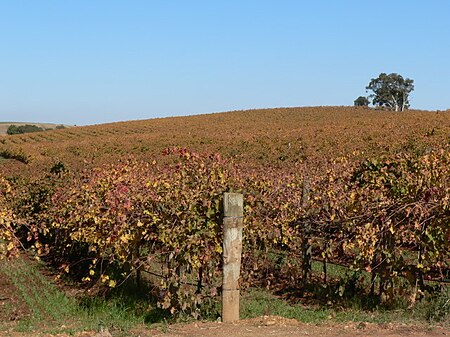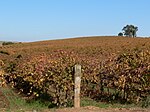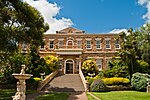Hundred of Nuriootpa

The Hundred of Nuriootpa is a cadastral unit of hundred in the County of Light, South Australia split between in the eastern Adelaide Plains and western Barossa Valley. Named in 1847 for an indigenous term officially thought to mean "bartering place" and traditionally used as neutral ground for trading between various indigenous tribes, it is bounded on the south and east by the North Para River. The town of Nuriootpa is at the north eastern corner of the hundred. Other towns within the hundred are Freeling, whose the southern and oldest parts straddle the north border of the hundred, and Greenock, also in the hundred's north. The localities of Nain, Kingsford, Shea-Oak Log, Daveyston, Seppeltsfield, Marananga, Stone Well and Gomersal as well as parts of Templers, Roseworthy, Concordia, Rosedale, Lyndoch, Rowland Flat and Tanunda are also within the hundred. The hundred borders on the greater Adelaide conurbation with the Gawler suburb of Hewett and parts of the suburbs of Gawler East and Gawler South also lying within the hundred at the south-western corner near the North Para's confluence with the South Para River.
Excerpt from the Wikipedia article Hundred of Nuriootpa (License: CC BY-SA 3.0, Authors, Images).Hundred of Nuriootpa
Edward Road, Light Regional Council
Geographical coordinates (GPS) Address Nearby Places Show on map
Geographical coordinates (GPS)
| Latitude | Longitude |
|---|---|
| N -34.501 ° | E 138.865 ° |
Address
Edward Road
Edward Road
5371 Light Regional Council
South Australia, Australia
Open on Google Maps








